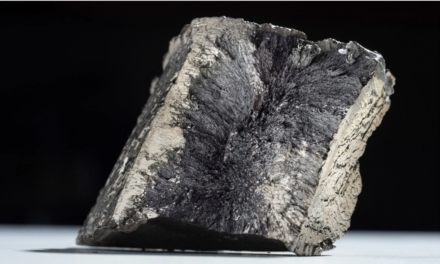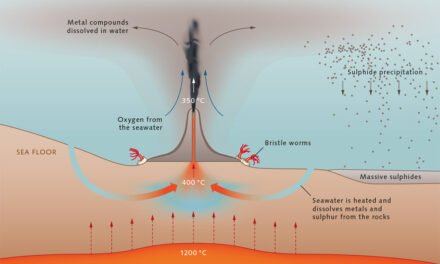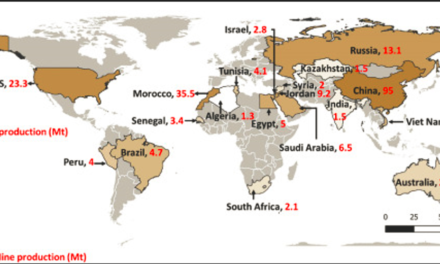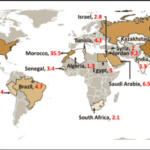Iron, aluminum, and titanium oxide minerals each have distinct properties that influence the efficiency of mineral separation techniques. These minerals, such as hematite (Fe₂O₃), bauxite (Al₂O₃·2H₂O), and ilmenite (FeTiO₃), are often present in ores as oxide minerals and can impact various separation processes, including flotation, gravity separation, magnetic separation, and leaching. Here’s how the presence of these oxide minerals affects the efficiency of mineral separation techniques:
1. Iron Oxide Minerals (e.g., Hematite, Magnetite)
- Impact on Separation:
- Density Differences: Iron oxide minerals like hematite and magnetite have high densities, making them more easily separated from other gangue minerals using gravity separation methods like jigging, shaking tables, or spiral concentrators.
- Magnetic Separation: Magnetite (Fe₃O₄) is strongly magnetic, and magnetic separation can be highly effective in separating magnetite from non-magnetic gangue minerals. Hematite, although weakly magnetic, can sometimes be separated by low-intensity magnetic separation.
- Flotation: Flotation of iron oxides can be challenging, as their surfaces are naturally hydrophilic (water-attracting). To improve flotation efficiency, chemical reagents (collectors, frothers) are used to modify the surface properties of iron oxide minerals, making them more hydrophobic (water-repellent) and allowing them to float.
- Leaching: Iron oxide minerals, like hematite, are generally not soluble in common acids and require high-temperature reduction in smelting or direct reduction methods to extract iron, which limits their efficiency in hydrometallurgical processes.
- Challenges:
- Gangue Interference: Iron oxide minerals may be found alongside other non-metallic minerals (e.g., silica, clay) that can complicate separation processes, requiring multiple steps to achieve an efficient separation.
- Froth Formation: The flotation of iron oxide minerals may result in excessive froth formation if not properly controlled, which can hinder the separation process and reduce recovery rates.
2. Aluminum Oxide Minerals (e.g., Bauxite, Gibbsite)
- Impact on Separation:
- Alkaline Leaching: Bauxite, primarily consisting of gibbsite, boehmite, and diaspore, is processed using alkaline leaching methods (the Bayer process) to extract aluminum. The presence of silica and iron oxide in bauxite ores can complicate the leaching process, as these impurities must be separated from the alumina (Al₂O₃) during the refining stage.
- Flotation: In the flotation of bauxite ores, the presence of silica and iron oxides often requires the use of specific reagents to selectively float or depress unwanted minerals. This selective flotation can be less efficient if the mineral composition of the bauxite ore is highly variable.
- Gravity Separation: Aluminum oxide minerals in bauxite are typically lighter than iron or titanium oxides, making gravity separation a useful technique in some cases to remove heavy impurities. However, fine-grained bauxite ore may require more intensive separation methods like flotation or leaching.
- Challenges:
- Silica Contamination: Silica is often a major impurity in bauxite ores, and separating it from the aluminum oxide requires careful control of the Bayer process. If the separation is not efficient, the resulting alumina may be contaminated, leading to lower yields of aluminum metal.
- Iron Impurities: The presence of iron oxide (e.g., hematite or goethite) in bauxite can complicate the refining process. Iron impurities must be removed to prevent contamination of aluminum metal, requiring additional refining steps like calcination.
3. Titanium Oxide Minerals (e.g., Ilmenite, Rutile)
- Impact on Separation:
- Magnetic Separation: Ilmenite (FeTiO₃) is often separated from other minerals using magnetic separation because it is weakly magnetic, and its magnetic properties can be exploited to remove it from non-magnetic gangue. Rutile (TiO₂), on the other hand, is non-magnetic and requires different separation methods.
- Flotation: Titanium oxide minerals like rutile and ilmenite can be effectively concentrated using flotation techniques. However, their flotation requires selective reagents to ensure the separation of rutile from other gangue minerals like quartz.
- Chemical Leaching: Titanium oxides like rutile and ilmenite are often processed using sulfuric acid or chloride processes to extract titanium. These processes involve high temperatures and chemical treatments that can be energy-intensive, requiring efficient handling of by-products such as sulfuric acid.
- Challenges:
- Complex Mineralogy: Titanium ores often occur with other oxide minerals like iron oxides and silica, which makes their separation more complex. Rutile and ilmenite can be difficult to distinguish and separate from each other or from other minerals like quartz, requiring advanced techniques such as magnetic separation, gravity separation, or flotation.
- Ore Impurities: Titanium oxide minerals often contain impurities such as iron, which must be removed during processing to produce high-purity titanium. This requires extra steps and can increase costs in the processing stage.
4. Overall Impact of Iron, Aluminum, and Titanium Oxides on Separation Efficiency:
- Density and Magnetic Properties: Iron and titanium oxides, due to their higher density and magnetic properties (in the case of magnetite and ilmenite), can be efficiently separated from gangue by gravity separation and magnetic separation. This is especially useful in the initial stages of processing, helping to concentrate the valuable mineral.
- Flotation Reagents: Oxide ores, particularly iron and titanium oxides, require specific flotation reagents to effectively separate them from gangue minerals like silica and clay. Aluminum oxide ores (e.g., bauxite) can require careful control of reagents to selectively separate aluminum from iron oxides and silica.
- Alkaline and Acidic Leaching: Oxide ores like bauxite and copper oxides are best processed through alkaline leaching and acidic leaching, respectively. However, this often requires careful management of reagents and waste by-products, as impurities like silica or iron can complicate the process and reduce recovery rates.
Conclusion
Iron, aluminum, and titanium oxide minerals each present unique challenges in mineral separation processes. Iron oxides like hematite and magnetite are typically amenable to gravity separation and magnetic separation, but their presence can complicate flotation processes due to their hydrophilic nature. Aluminum oxide minerals, such as those found in bauxite, require alkaline leaching for extraction, but impurities like silica and iron can complicate the separation process and reduce efficiency. Titanium oxides such as rutile and ilmenite require advanced methods such as flotation and magnetic separation to efficiently concentrate the titanium-bearing mineral from gangue.
Overall, the presence of these oxide minerals in ores impacts separation efficiency by requiring careful selection of processing methods, reagents, and separation techniques to maximize metal recovery and minimize costs.














